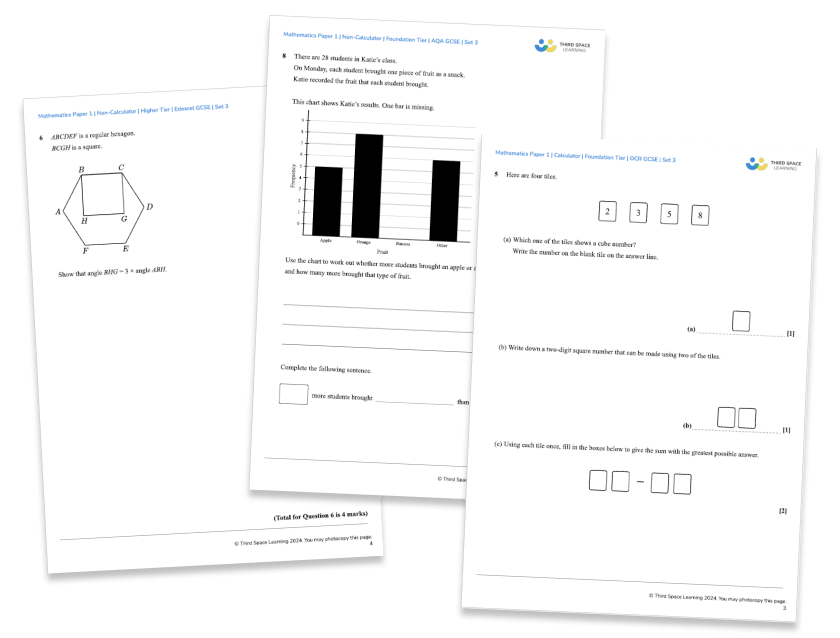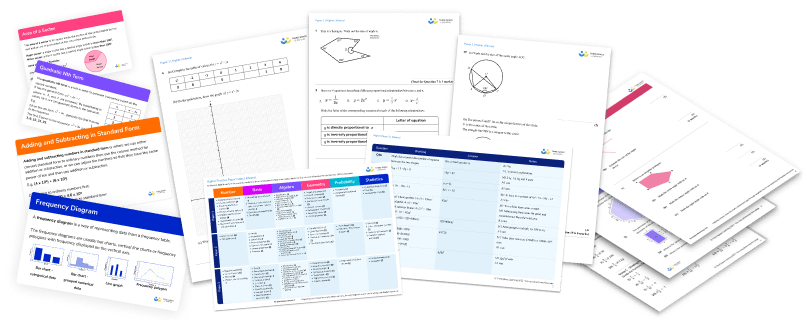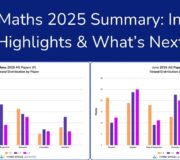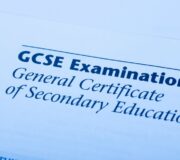How To Use Your 2024 GCSE Exam Paper Data To Inform Your Planning For GCSE Maths 2025
In any year, exam paper data and student scripts are useful tools for reflection and planning. Until recently, there has been a cost attached to requesting student exam scripts. However, in recent years, students’ exam scripts have been made available for free online. This provides a unique opportunity to analyse student performance in depth from a range of students.
In this blog, we discuss how we can not only just analyse performance, but also use post-exam result data to inform teaching and learning.
GCSE MATHS 2026: STAY UP TO DATE
Join our email list to stay up to date with the latest news, revision lists and resources for GCSE maths 2026. We’re analysing each paper during the course of the 2026 GCSEs in order to identify the key topic areas to focus on for your revision.
GCSE dates 2026
GCSE results (2026 when available)
Get ahead on revision with the GCSE maths papers analysis from 2025:
Analysis of GCSE Maths Paper 1 2025
Analysis of GCSE Maths Paper 2 2025
GCSE Maths Paper Analysis and Summary 2025
GCSE Maths Teacher Survey Results 2025
What post-results support is offered by exam boards?
Exam boards offer various post-results services, including access to student scripts, clerical checks, and marking and moderation reviews. Some of these services will normally incur a charge. Since 2022, exam boards, including AQA, Edexcel and OCR, have provided access to any students’ original marked script for free.
Exam boards have differing services and offerings so please check up to date information with each exam board. Additionally, ensure you note down the deadline for requesting access to scripts as they often close within a few weeks of results’ day. Usually for the exams in June, you need to request the scripts by September of that year.
An invaluable resource provided by the exam boards are their free online results analysis tools.
These tools provide us with customisable, insightful results reports that can show us actual scores for each exam question for:
- Students
- Classes
- Comparative sub-groups
They can also show us how our cohort’s performance compares with the national average to help us to honestly reflect on the previous academic year and help us to proactively plan for the coming year.
These tools include:
- Results Plus for Edexcel
- Active Results for OCR
- Enhanced Results Analysis (ERA) for AQA
Let’s take a closer look…
1. Results Plus for Edexcel

2. Active Results for OCR
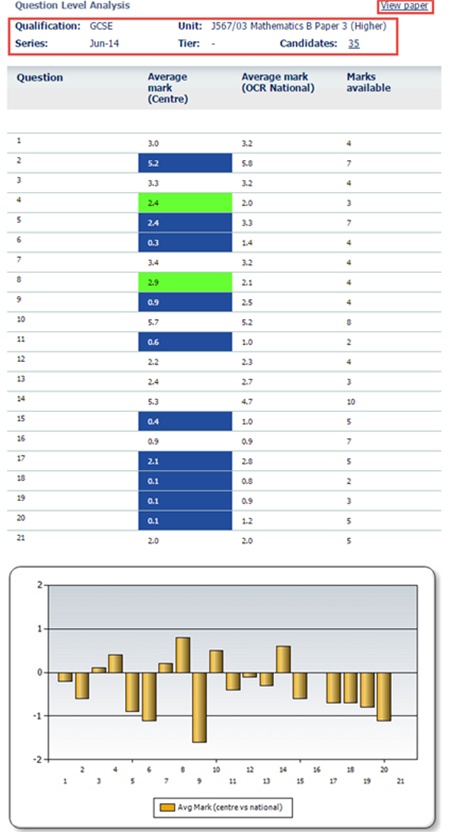
3. Enhanced Results Analysis (ERA) for AQA
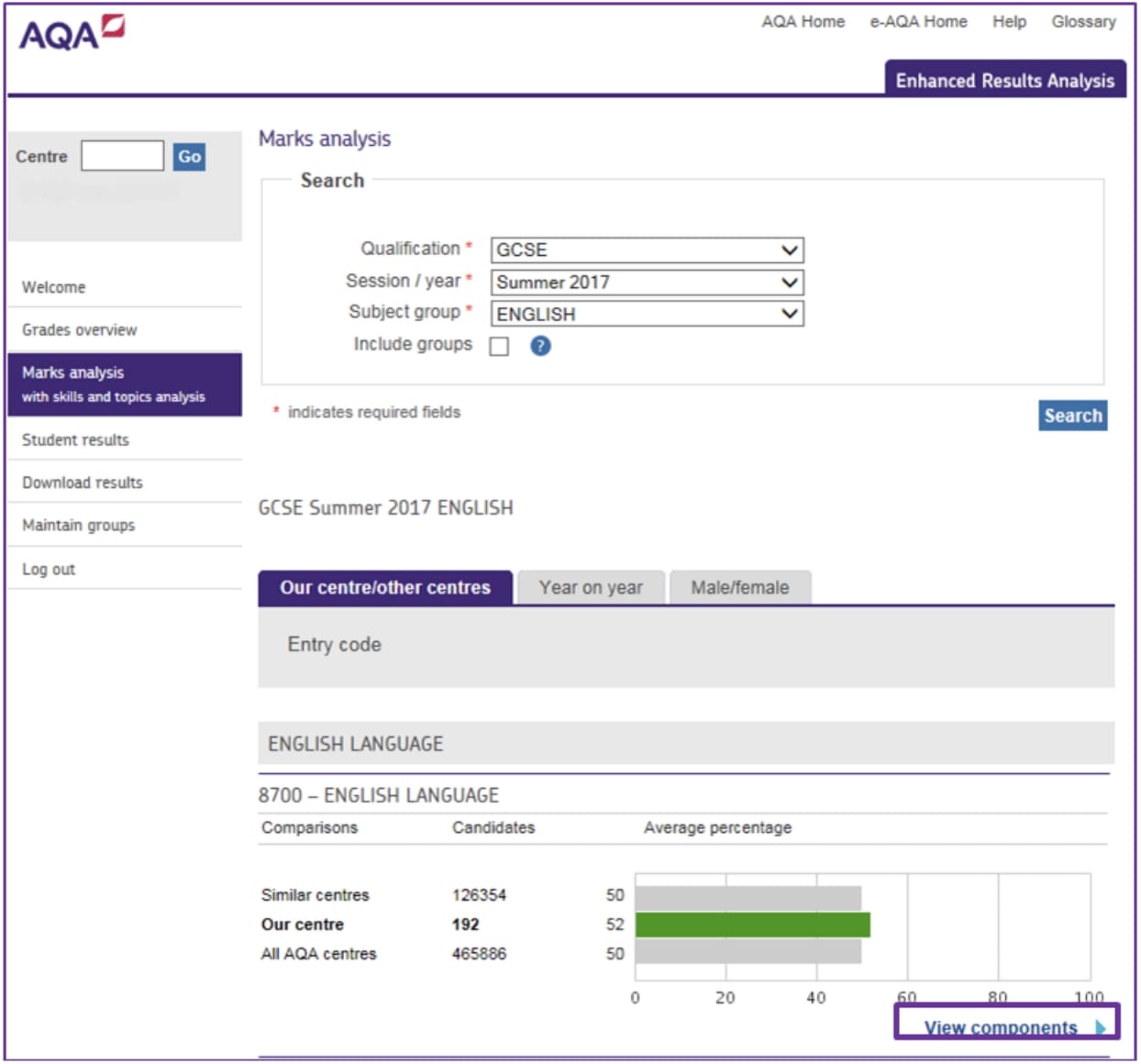
GCSE Maths Papers: Foundation & Higher (Edexcel)
Each set includes three papers (1 non-calculator and 2 calculator), answers and mark scheme
Download Free Now!What are the key accountability measures?
The key accountability measures for secondary schools are:
- Progress 8
Progress 8 is a measure of the progress students make over a 5-year period from the end of primary school to the end of secondary school. It looks at their GCSE grades in eight subjects and compares them to the results of students from a previous cohort who performed similarly. This comparison is then used to determine whether students have progressed above, or below the expected level.
- Attainment 8
Attainment 8 is a measure published annually which shows the academic performance of a secondary school. The highest scores across 8 (attainment 8) school subjects are used to calculate an average attainment score for the cohort.
- EBacc
The English Baccalaureate (Ebacc) requires students to study at least seven GCSEs in the five areas: English language and literature, maths, the sciences, geography or history and a language. A school’s EBacc score is calculated by finding the average of the EBacc point score for all students in the cohort at the end of secondary school.
- Attainment in English and maths (grades 5 or above)
This measure looks at the percentage of students that achieve grade 5 or above in both English and maths.
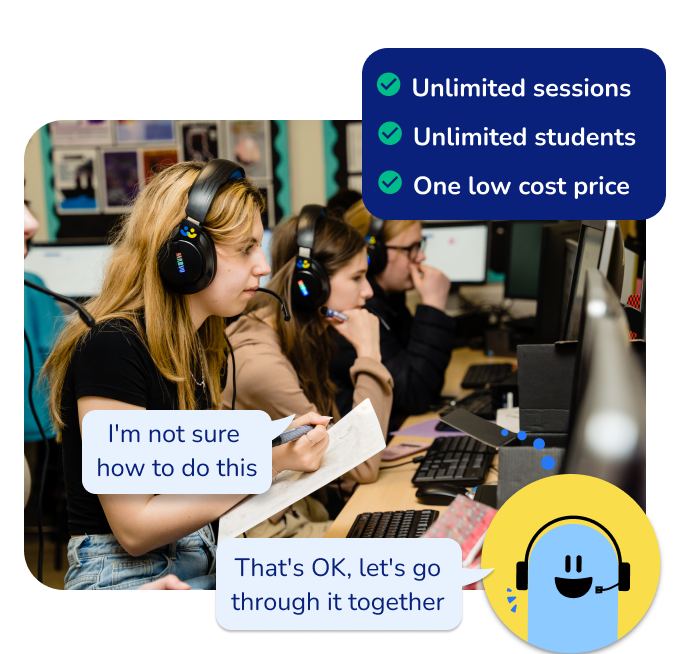
Unlimited GCSE maths tutoring with Skye, the voice-based AI maths tutor.
Built on the same principles, pedagogy and curriculum as our traditional tutoring but with more flexibility, reach and lower cost.
Help your GCSE students achieve their target grade with Skye’s one to one maths tutoring.
Watch Skye in actionHow should key accountability measures be used when analysing results data?
We can use key accountability measures to undertake some comparative analysis between key sub-groups of students, including:
- Disadvantaged students;
- Students with a special education need or disability (SEND);
- Students that receive free school meals (FSM);
- Looked after students (LAC);
- Students that have English as an additional language (EAL).
By examining the data, we can highlight any groups of students that outperformed or underperformed against the exam board averages and start to work out why this may be happening.
For example, the image below is from AQA’s online analysis tool, ERA.
- The four bars at the bottom indicate average student performance;
- The top grey bar shows how students in schools similar to this one performed on average;
- The second green bar shows how all students in their school performed on average;
- The third grey bar shows how all students from AQA schools performed on average;
- The bottom green bar shows the average performance of a select group of students.
From this graph, it is clear that the group of students selected performed better on average than not only other students in their school, but also students from schools in similar contexts and all students in that year’s AQA examining schools.
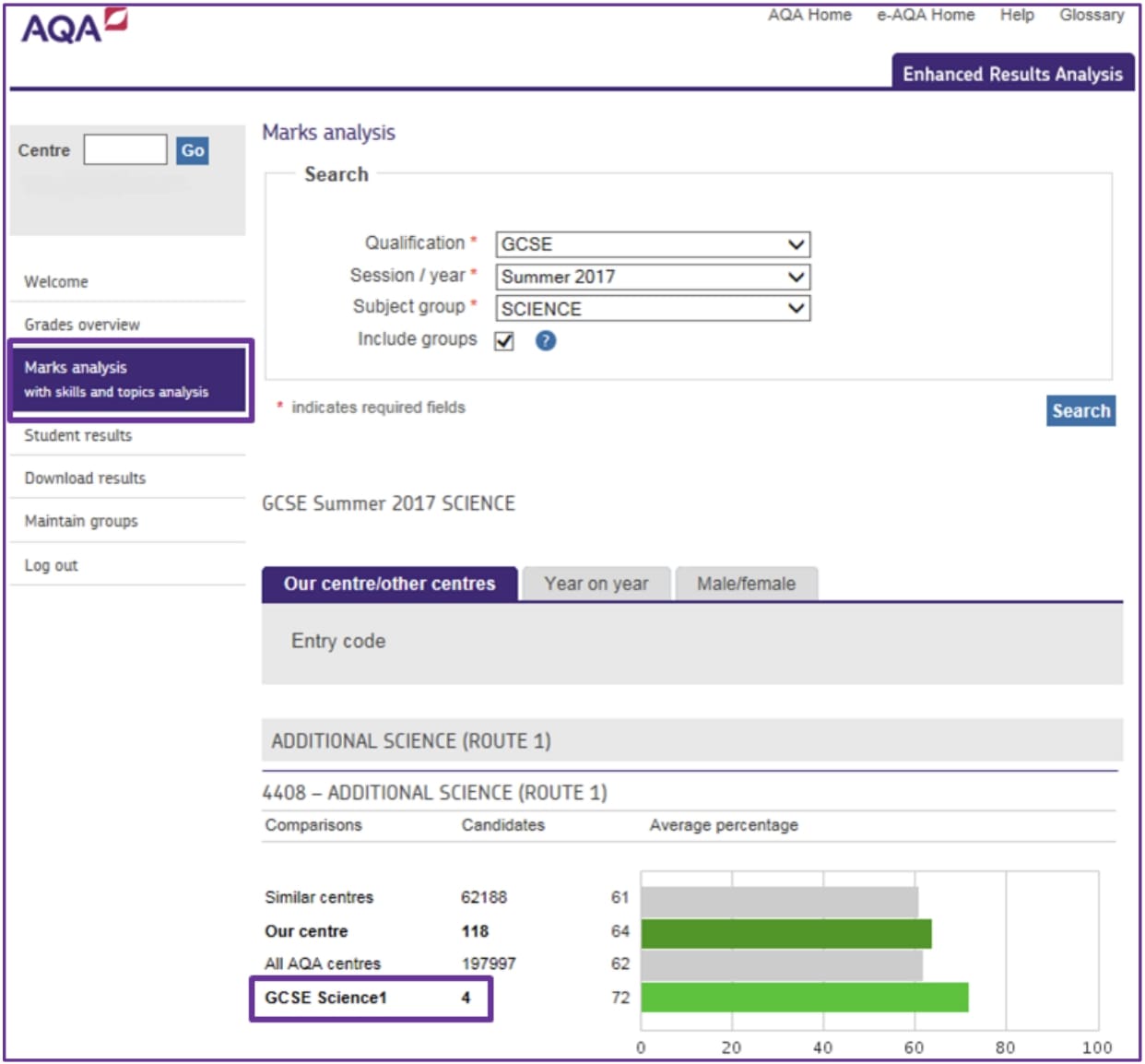
Which exam scripts should be requested?
We can use the results analysis tools to decide which exam scripts we want to look at in more detail. In previous years, the cost attached to requesting each exam script meant that schools had to be strategic when choosing which scripts to request.
Selected scripts may be from:
- Students that are very close to the next grade boundary.
Although great care is taken when marking exam papers, it is possible that marks may have been overlooked on a paper. If a student is close to the next grade boundary (1 or 2 marks away), it could be appropriate to request a review of the marking for that paper.
This strategy is not without its risks; a remark could result in the overall marks awarded decreasing. Regardless of whether the mark awarded changes, by requesting these scripts, teachers can gain important insights into how marks are awarded at GCSE. This information can then be used to help prepare the next year’s cohort for their examinations.
- Students that have received notably high or notably low marks.
By carefully analysing the exam scripts for students that have done particularly well or particularly poorly, lessons can be learnt as to why this may have occurred. By examining which questions they attempted, the methods they used to attempt them, and how marks were acquired across each paper, valuable insights can be gained and used to support similar students in future cohorts.
- Students from a particular ‘group’.
Students in your exam cohort may belong to a particular group that has been identified as underperforming in your school, e.g. disadvantaged students. By requesting and analysing scripts from students in a particular group, areas of strength and areas of development can be identified.
How to make the most of exam scripts
Let’s look at a few examples of scenarios when requesting a larger number of scripts may be beneficial.
- You want to see how successful specific interventions were.
You will have highlighted areas for focus, through your internal assessment and data tracking, as the year went on. Based on this, you put specific interventions in place to support student learning, maybe:
- Group revision sessions;
- One-to-one tutor support;
- Targeted independent learning;
- Staffing movements to utilise teacher strengths in topic teaching;
- Class movements to form smaller grade targeted groups.
Requesting the scripts of students involved in these interventions would support the evaluation of the impact of the interventions themselves.
They will give you an idea of whether:
- The revision sessions had an impact;
- The students performed well;
- There’s an improvement from the mock exams;
- The planning and staffing of this was a success (and should be repeated when appropriate).
For example, your department put in place an intervention to reteach specific topics. These topics were identified from mock exams that a group of students struggled with in weekly after-school revision sessions. If there is no evidence of improvement, then the intervention was not successful.
Look to unpick this further – did students attend and engage during the revision sessions? If the answer is no, look to improve engagement and attendance this year.
If the answer is yes, reflect on the planning and staffing for the sessions. There may be staff development opportunities here.
- A large proportion of students were not awarded marks in the back third of the exam paper.
If students have attempted the questions, but not been awarded any marks, this could highlight specific gaps in student knowledge and is something you would only have known by looking at the scripts.
However, if students have left the questions blank, this could be an indicator that students were not ‘exam ready’ and need support with exam technique; it could suggest they ran out of time. Exam technique should potentially be a focus for future exam cohorts.
Used strategically, these scripts can give us a deeper level of understanding about student strengths and weaknesses that cannot be gained by performance data alone. We can treat it as another formative assessment.
What to look for in requested exam scripts
Let’s dig into some useful data that can be gathered from the scripts your school has requested, how to make sense of it and how to make a plan for improvement.
Any class-by-class comparisons should be used as an opportunity to identify the department’s overall strengths and make plans to act on areas that can be further developed to support your students.
We’ll explore four main categories through which to order your analysis:
- Topics where an entire class underperformed;
- Topics where an entire class performed well;
- Topics where a class performed unexpectedly;
- How students performed on different types of questions.
Topics where an entire class underperformed
| Was the question attempted? | This could indicate: – Time management issue; – Subject knowledge issue; – Confidence issue; – Issue with problem-solving style questions. Consider the likelihood of each of these scenarios (which may require further investigation) and take steps to address them. |
| Is there evidence of a particular misconception in this topic? | For example, students are seen to be subtracting the squares when they should have added them when finding the hypotenuse in the Pythagoras’ aspect of the question. To address this, collaboratively plan for these maths misconceptions to be highlighted and addressed in lesson planning and resources for the teaching of this topic in future. |
What do these findings tell you?
- Is there a need for staff pedagogical or subject knowledge development?
- Are there potential curriculum issues?
- Do you need to plan focused interventions for these students?
Topics where an entire class performed well
- Is there a teacher who has strong subject knowledge, and/or is delivering the material using particular teaching methods based in research?
- Does this indicate a strength in your curriculum sequencing?
Topics where a class performed unexpectedly
Is student performance in certain topics as expected?
Scenario 1: You expected to find that students aiming for a grade 4 in maths struggle with interleaving Pythagoras and trigonometry problem. Your continuous tracking data through the year showed they were able to apply Pythagoras’ theorem in isolation, but struggled to grasp trigonometry, so were not exposed to questions which combined both skills.
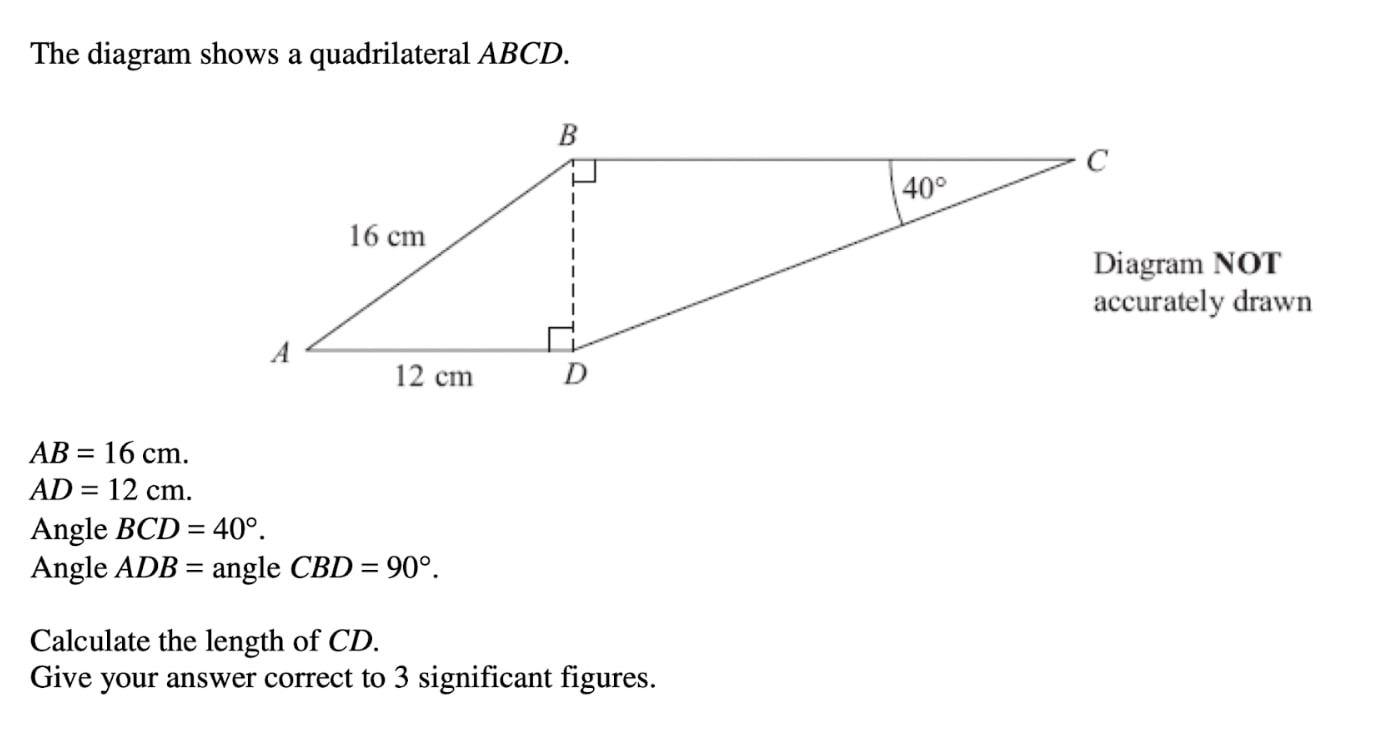
Scenario 2: You didn’t expect students to underperform on a fraction arithmetic question. This topic has extensive curriculum time and is covered at primary and KS3.
These scenarios may prompt the following considerations:
- Is there a need for staff development around the teaching of these topics?
- Do you need to consider where these topics appear in the curriculum?
How students performed on different types of questions
In GCSE maths, the exams assess three key assessment objectives (AOs).
Different questions may align more closely with each assessment objective and analysing your students’ performance on these will help you to decide what support students need.
AO1: standard technique recall
For AO1, students need to be able to use and apply standard techniques by accurately recalling facts, using mathematical notation correctly and carrying out routine mathematical procedures. For example, recalling angle facts, or carrying out written arithmetic.
Resources to develop recall
To recall facts and skills, students need to encounter them more often. Add this skill into retrieval activities that are planned to support learning throughout the curriculum. These activities could include daily retrieval starters, weekly/monthly fluency quizzes and lesson activities planned to activate prior knowledge.
Fluent in five is our free downloadable resource that provides your students with lots of opportunities to practise key skills. For every day of the week, your students can attempt 5 questions designed to develop retrieval. Each question focuses on a different skill which increases in difficulty as the week progresses.
There are sets of Fluent in five questions for Autumn, Spring and Summer terms and each comes with a ‘how to use’ guide to help to pinpoint specific maths skills. Fluent in five can be printed off as a worksheet, or projected a set of slides so teachers can use these in a variety of ways to support their students. They are available to download for free now!

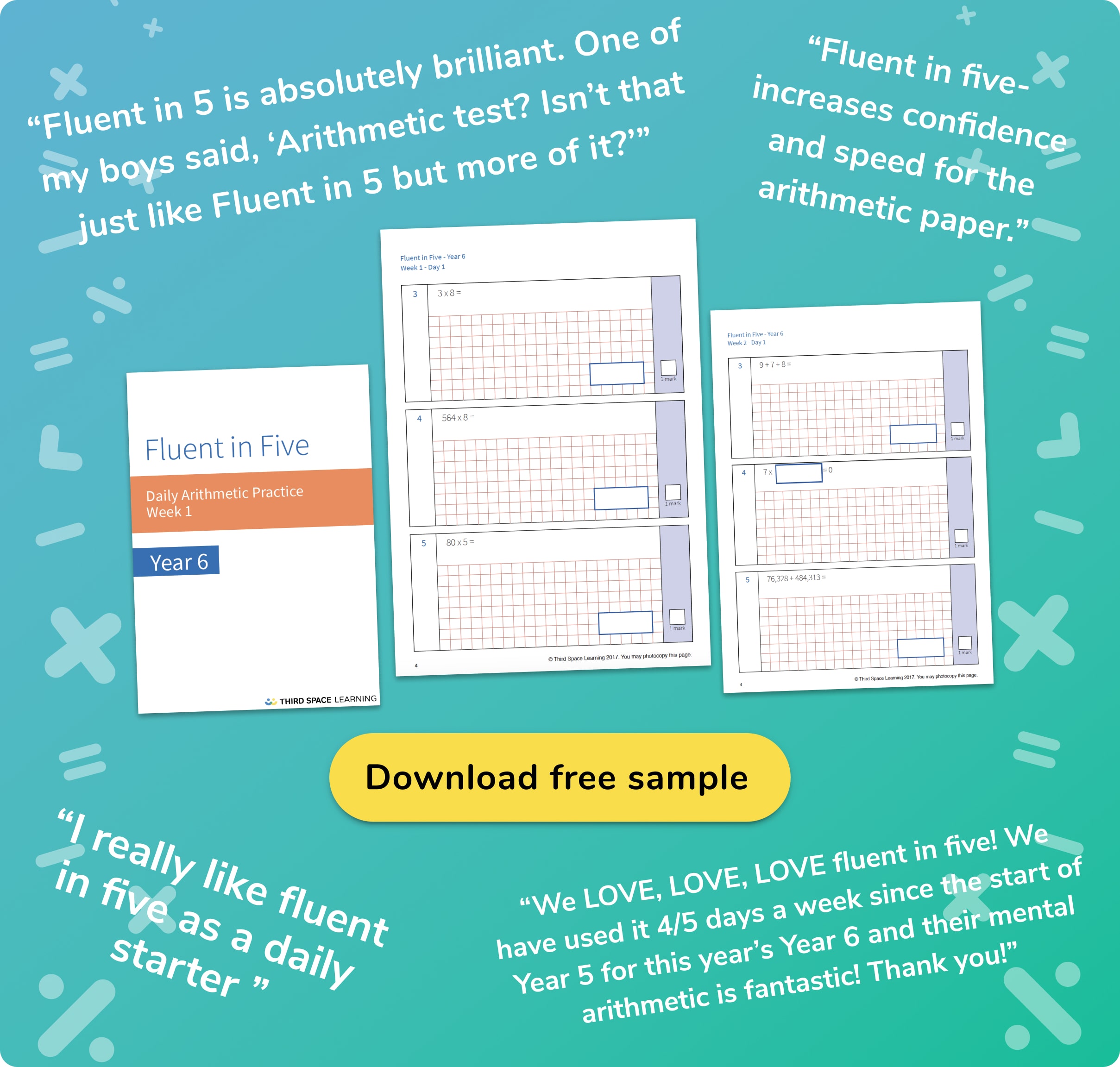
AO2: reasoning and interpretation
For AO2, students need to be able to reason, interpret and communicate mathematically by drawing conclusions and making inferences, constructing chains of reasoning and accurately interpreting and communicating information.
For example, recognising a 2D shape as a quadrilateral, recalling the fact that angles in a quadrilateral sum to 360, then using the recalled information to find a missing angle.
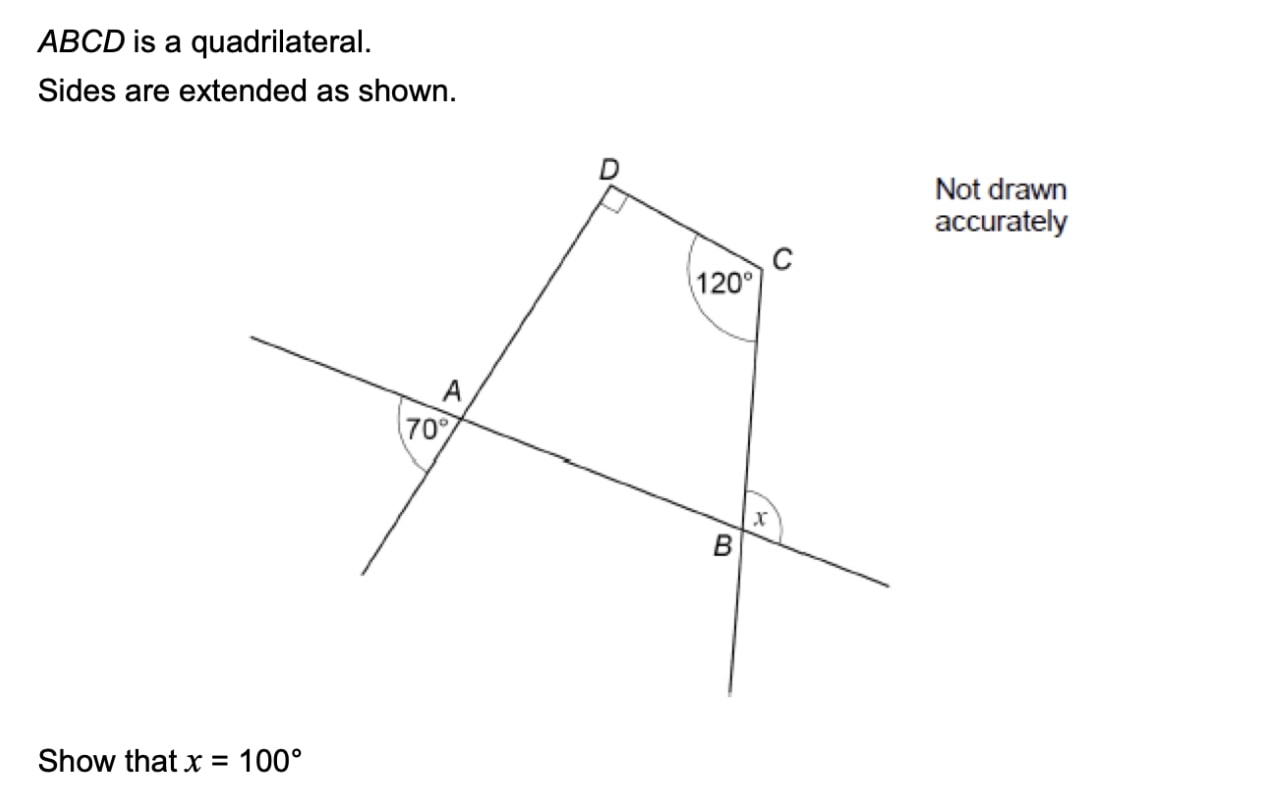
Resources to develop reasoning
Students need to have procedural fluency in recalling facts and carrying out routine mathematical procedures to be able to make connections and reason. When students are ready, plan to introduce interleaved questions with minimal difference to encourage discussions and deeper thinking.
Our free downloadable worksheets are designed to build skills gradually and are split into three sections. The first section focuses on key skill practice, the second on applying those skills, and the third on exam style questions. Using the applied section of the worksheets is a great way for students to use their knowledge in a variety of different contexts.
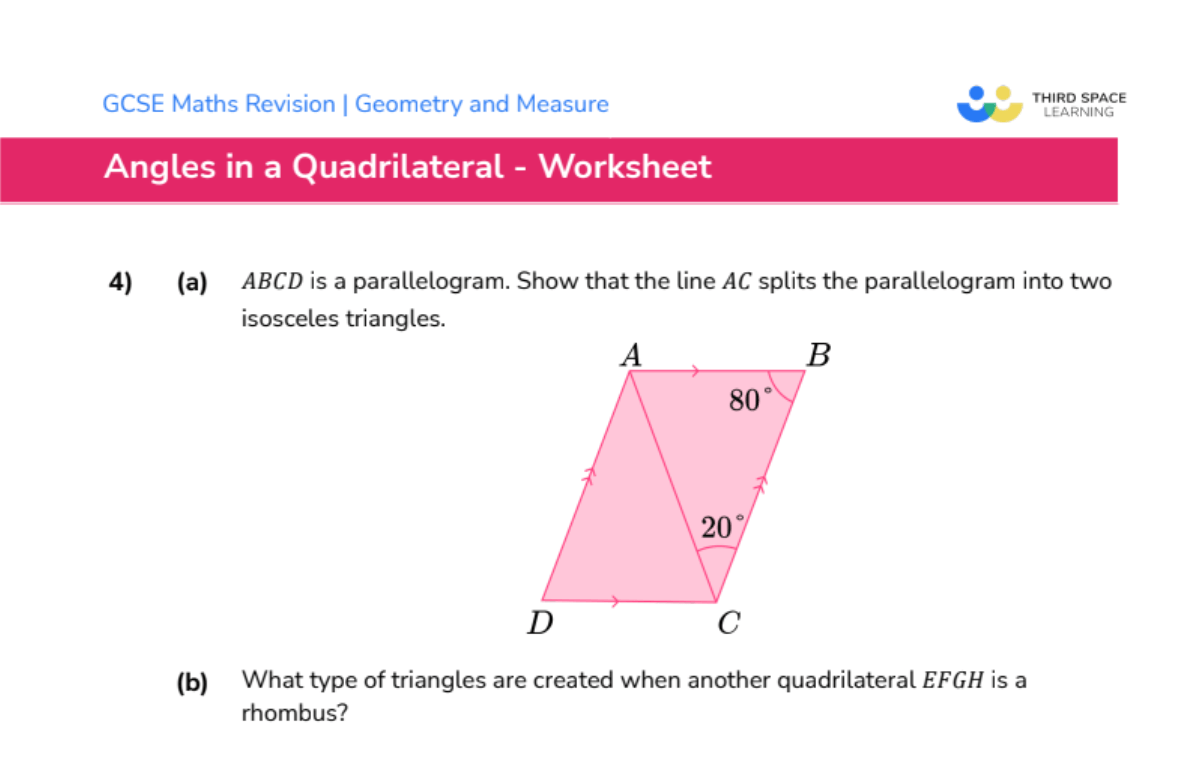
AO3: connecting contexts
For AO3, students need to be able to solve mathematical problems in different contexts, by making connections between different areas of maths and interpreting results in the context of a given question.
For example, referring back to the example of the interleaved Pythagoras’ and trigonometry question from earlier in the blog, if students struggled on this type of question, it could mean that more time is needed in the curriculum to cover both of these topics in depth, as well as sufficient exposure to mixed questions.

Students need exposure to problems in different contexts to support them in making connections between the different areas of maths.
Additionally, students need to be taught how to approach problems and identify the topics involved, before beginning work on the problem itself. In other words, using problems that look to be the same on the surface, but underneath require different mathematical skills to solve them.
Resources to connect contexts
Same surface, different depth or SSDD problems can help develop mathematical problem-solving tools by identifying the maths needed to solve the problem, then successfully carrying this out to get a solution to the problem.
An example of one of these problems can be seen below. Each question looks similar on the surface, however, they require students to carry out different mathematical processes to solve the problem.
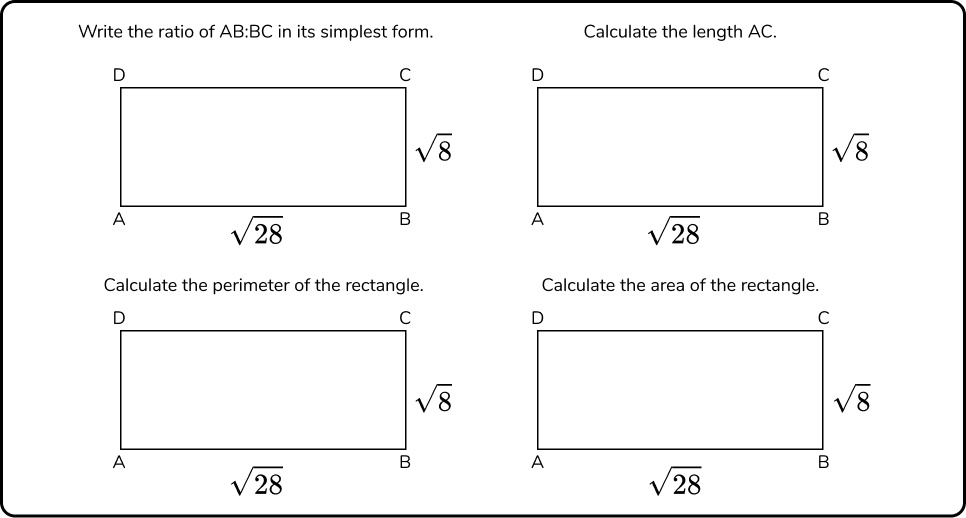
Craig Barton has developed lots of SSDD problems that are available to download.
Another good way to develop these skills is to use Goal Free Problems. These aim to remove the cognitive overload associated with finding the correct solution. This gives students the freedom of thought to discuss the potential maths that could be used, which helps to make connections across topics.
Goal free problems can easily be created from exam questions by removing the questions and leaving only the diagram and supporting information. It is a great tool to encourage discussions around making those bigger links across the curriculum.
For example, this question is taken from Exam Question 2 on our free, downloadable Area of a Parallelogram Worksheet.
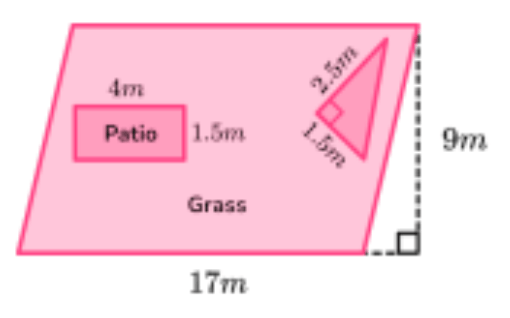
Students could then be asked to work out as much as they can.
They may work out:
- the area of each shape
- the area of the light pink section
- the percentage of the light pink shape that is taken up by the light pink shape
- the perimeter of the shape
- the angles of the shape using trigonometry
- and much more!
One of the best ways to support students to identify the skills needed to solve problems is through discussion, but this isn’t always possible in a whole class setting.
One-to-one tuition offers a supportive learning environment tailored to students’ individual needs to promote discussion and exploration of maths and maths problems.
In our AI tutoring for maths, we use diagnostic questions to identify the areas where students need support, then Skye, the AI maths tutor, works with students one-to-one to practise the key skills to enable them to answer increasingly in-depth exam questions, providing scaffolding as needed.
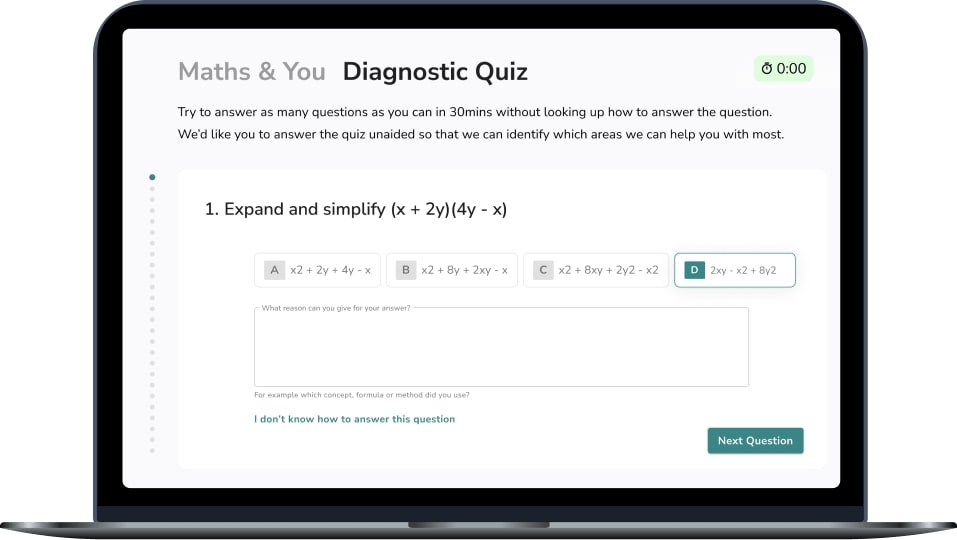
Legacy: what happens next with the data?
This is the important part! What have you learnt from the data?
Make sure you capture your department’s strengths, as a whole and in individual teachers, celebrate them, share them and continue them.
An essential takeaway from the exercise is that one piece of data is not enough to tell us anything of importance and inform future foci. Beyond what you already know about these students, reviewing both performance data and exam scripts will provide an extra depth of insight.
This information can then be used positively to:
- Refine teaching practices throughout the department;
- Pitch future teaching to particular strengths and weaknesses;
- Inform teaching strategies for next year;
- Shape your curriculum at each key stage;
- Highlight topics that would benefit from being taught in depth earlier.
When planning your next steps, it’s important to pick a focus that you can have a real impact on. Remember to keep an eye on what you can influence and what is not in your control. There are many variables, some of which are out of your control, that have an impact on exam outcomes, and we only have a short period of time to reflect, plan and adapt for the next year.
Suggested strategies from analysing exam scripts
In the final portion of this blog, let’s suggest some strategies to start addressing the needs identified from detailed exam script analysis.
| Identified need | Strategies |
| Staff development | Departmental support with teaching and learning. This could include collaborative planning in department meeting time and observing colleagues with strengths in this area.Cross-curricular support with teaching and learning, using the strategies above. There will be experts in appropriate pedagogy in other departments too.Pedagogical CPD courses offered through the school, Trust or external providers.Develop subject knowledge at a departmental level. Use department meeting time and teachers with strong subject knowledge in this area to support and develop peers.Collaborative planning for the teaching of these topics to enhance subject knowledge.Subject knowledge enhancement CPD courses offered through the school, Trust or external providers. |
| Curriculum development | Reflect on where the topic is placed in the curriculum. For example, if it is taught in the week before a school holiday, where often students are excited for the impending break, and teachers are tired, consider moving it to give it everyone’s full attention. Use strengths in curriculum sequencing to further adapt the curriculum to support the teaching of other topics.Consider the sequencing of topics. Do previously taught topics cover the prior knowledge required to be successful in this topic? For example, if the topic is expanding triple brackets, have students been taught to expand double brackets and collect like terms? If they have, how well was it taught? This could indicate another area for staff pedagogical or subject knowledge development that can be planned for as discussed above. Reflect on the time allocated for the teaching of this topic. Learning takes time; if students are struggling to grasp it in the allocated 2-week slot, for example, consider what other topics you could reduce teaching time on, or even remove from your curriculum altogether. Pick and choose which topics you can linger on and which you can skim past based on data and what you know about their experience of the maths curriculum up to now. Provide more opportunities for retrieval practice. How often are students retrieving and using the skills needed for success in this topic? Add this topic into any daily, weekly or monthly retrieval activities used alongside your curriculum. These could include daily retrieval starters such as Third Space Learning’s Fluent in Five, weekly/monthly fluency quizzes or independent study work set for students to complete outside of school. |
| Student exam preparation | Regular, low-stakes timed quizzes. Start with short bursts (10/15 minutes) and then build up the time students are working independently under exam conditions. When guiding students through self-assessment during lessons, assign marks to questions and work as the exam boards do, discussing where marks are gained and lost.Mock exams or ‘walking talking mocks/marks’. Ideally these should take place in locations students will sit their GCSEs to build familiarity and embed exam routines. |
| Targeted interventions | Additional adults provided for targeted support in lessons.Lunchtime or after school revision sessions. Bespoke independent study sets for students.Use available staff in school to deliver intervention sessions when students have availability in their timetable. Consider external tuition providers, such as Third Space Learning’s AI tutoring with Skye. Learn more about how it works, funding options and a personalised quote. |
| Intervention engagement and attendance | Offer rewards for attendance.Ensure parents/carers are fully informed about the intervention and onboarding to support their child’s attendance. Consider a student voice activity to find out why students are not engaged or attending. |
Further reading:
- JCQ Post-Results Services
Information and guidance on post results services for exam centres.
- AQA Post-Results Services
Information and guidance on post results services for AQA exam centres.
- Edexcel Post Results Services
Information and guidance on post results services for Edexcel exam centres.
- OCR Post-Results Services
Information and guidance on post results services for OCR exam centres.
DO YOU HAVE STUDENTS WHO NEED MORE SUPPORT IN MATHS?
Skye – our AI maths tutor built by teachers – gives students personalised one-to-one lessons that address learning gaps and build confidence.
Since 2013 we’ve taught over 2 million hours of maths lessons to more than 170,000 students to help them become fluent, able mathematicians.
Explore our AI maths tutoring or find out how a GCSE maths tutor could support students in your school.
